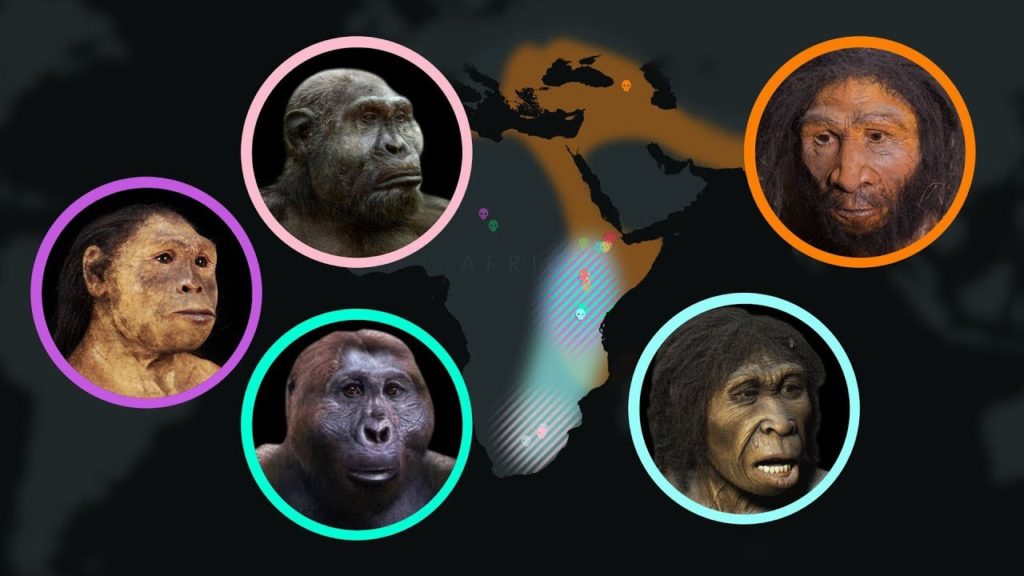The Evolution of Humans: A Journey of 7 Million Years
Foundations in Africa
From our earliest ancestors around 7 million years ago, humans have undergone significant evolutionary changes that have led to the species we are today. Some of the first recognizable hominins included Sahelanthropus tchadensis, dated to around 6-7 million years ago in central Africa. With a brain size of around 350-380cc, S. tchadensis displayed a combination of ancestral ape-like features along with more human-like traits such as reduced canine teeth and adoption of bipedal locomotion. Another early hominin was Orrorin tugenensis from around 6 million years ago in Kenya. O. tugenensis had features associated with both arboreal habits and bipedalism. Estimated brain size was around 300-350cc. Findings such as these demonstrate that the human lineage had already begun to diverge from the last common ancestor with chimpanzees by around 7-6 million years ago.
Adaptations on the Savanna
From 4-2 million years ago, hominins such as Ardipithecus, Australopithecus afarensis and Australopithecus africanus inhabited the African savanna and woodland areas. Species like A. afarensis , represented by the famous “Lucy” fossil dating to 3.2 million years ago, were adapated to bipedalism while still retaining some arboreal capabilities. Brain sizes were around 400-550cc. These early hominins were likely key in advancing bipedalism and developing nut-cracking and stone tool use behaviors in changing environmental conditions.

Spread of Genus Homo
Around 2 million years ago saw the emergence of the genus Homo in Africa, including early species like Homo habilis and Homo rudolfensis. Characterized by larger brains averaging 625cc, thin skulls, and elongated lower limbs adapted for efficient bipedalism, H. habilis is considered the first true tool-making hominin based on archaeological evidence of stone tool production.
Out of Africa Migration
Starting around 1.8 million years ago, the early Homo ergaster migrated out of Africa, likely in response to climate change. One population settled in Asia and evolved into Homo erectus, which eventually spread throughout Africa, Asia and into Europe. With a brain size of 800-1200cc, H. erectus manufactured advanced stone tools and controlled fire. They represent the first long-distance human migration out of Africa. Findings of H. erectus in Indonesia dating to over 1 million years ago exemplify their wide dispersal.
Evolution of the Genus Homo
Back in Africa, populations of H. erectus or H. ergaster evolved into Homo heidelbergensis around 600,000 years ago. Characterized by a wide, rounded braincase, H. heidelbergensis had more modern human-like faces but retained archaic traits as well. This species then migrated out of Africa again around 400,000-500,000 years ago.
Neanderthals and Denisovans
The H. heidelbergensis populations that settled in Europe and Central Asia evolved into the Neanderthals, famous for their robust builds and thick browridges. Neanderthals inhabited Europe and parts of Asia for over 300,000 years before going extinct around 40,000 years ago. Meanwhile in Asia, another population transitioned into the mysterious Denisovans. DNA evidence shows both Neanderthals and Denisovans interbred with modern humans when they encountered each other after migrating out of Africa again.
Emergence of Modern Humans
The H. heidelbergensis populations that remained in Africa evolved traits closer to Homo sapiens and eventually gave rise to anatomically modern humans between 300,000-200,000 years ago. Characterized by a globular braincase, chin, and reduced browridge and face size, H. sapiens inherited cultural and genetic exchanges from extinct hominins like Neanderthals. Technological innovations like controlled use of fire, artistic expressions in cave paintings, and advanced stone tools emerged.
Migration and Spread of Humans
Around 70,000 years ago, modern humans embarked on a series of migrations out of Africa, spreading throughout Europe, Asia, Australia and later the Americas. Carrying Stone Age technologies and cultural traditions with them, these people encountered many environmental changes and challenging climates. Evidence suggests they may have competed with or assimilated resident populations of Neanderthals and Denosovians, contributing to their extinction.
Adapting to New Environments
As settlers reached higher latitudes in places like Europe and Asia, certain genetic changes enabled populations to adapt to local environments through natural selection. For example, variations in skin pigmentation, fat metabolism, lactose tolerance and immunity are hypothesized as adaptive responses to climates with less sunlight and new diets. These migratory episodes brought all of humanity’s genetic diversity outside of Africa within the last 100,000 years.
Modern Human Diversity
Today, genetic studies indicate all humans alive share a common origin in Africa within the last 200,000 years. While surface level traits like skin color have diversified across climates, modern human populations remain remarkably similar at the DNA level. Only tiny genetic variations separate individuals of different geographic ancestries and ‘races’ as socially constructed categories do not scientifically classify different species.This reflects our shared evolutionary heritage as a single surviving hominin lineage, Homo sapiens.
Conclusion
The evolutionary journey of humans over the past 7 million years traces an incredible story of adaption, migration, and genetic interchange between ancestral species. Through technological, behavioral, and biological changes in response to environmental stimuli, ancestral hominins diversified and spread before modern humanity arose in Africa. Although many relatives went extinct, descendants of one small founding population colonized the entire planet, a testament to the success and flexibility of our species. With a shared ancestry and 99.9% identical DNA, all humans today remain intimately connected on our ongoing evolutionary path.
